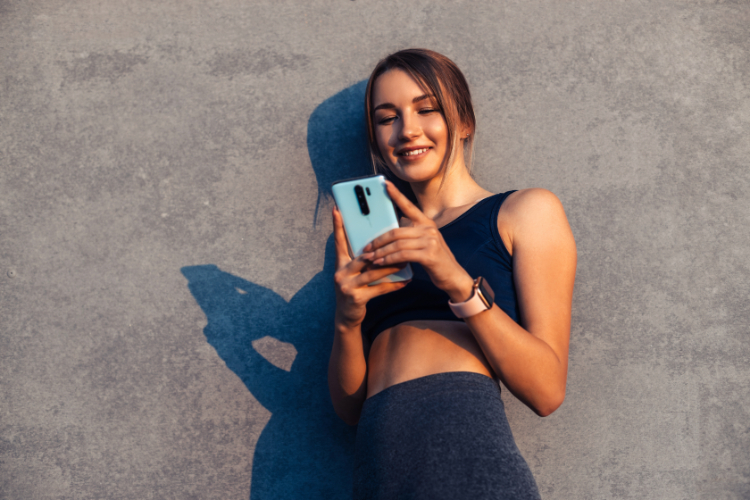Expert Ways To Create A Blog Design That Stands Out
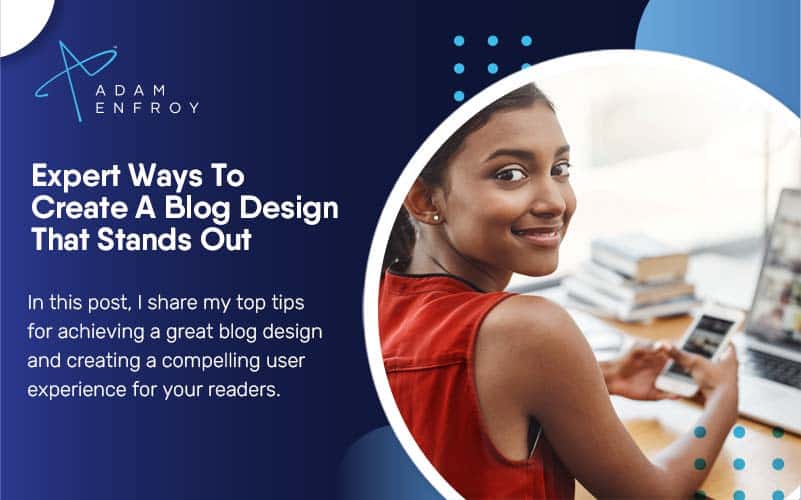
Have you ever seen a blog that looks like a room decorated by a toddler?
While it might be full of colors, there might have been no real sense of style.
Let me ask you another question.
Have you ever walked into a store, got immediately lost, and couldn’t find what you were looking for?
Not a great experience, was it?
You don’t want your readers to feel the same way when they enter your online digital storefront, also known as your business blog.
After all, great blog design is like a well-trained butler.
It subtly guides your visitors where you want them to go, ensuring they find what they’re after without digging through your digital laundry basket.
A great design also uses the right colors that complement your brand.
In this post, I share my top tips for achieving a great blog design and creating a compelling user experience for your readers.
- Designing A Killer Blog
- General Blog Design Considerations
- Responsive Website Design And Social Sharing
- Bring Your Story To Life Through Your “About Me” Page
- How To Optimize Your Design For Better Readability
- Make Your Blog Stand Out With Visual Elements
- Enhancing Your Blog With Interactive Features
- Strategic Blog Branding Techniques
- Search Engine Optimization (SEO) For Your Blog
- Effectively Monetizing Your Blog
- Wrap Up.
Designing A Killer Blog
To create a successful blog that attracts and retains visitors, have a visually stunning and informative homepage.
A well-designed homepage can help your brand stand out and attract and retain followers.
Here are some tips on designing a killer blog homepage.
Header And Navigation
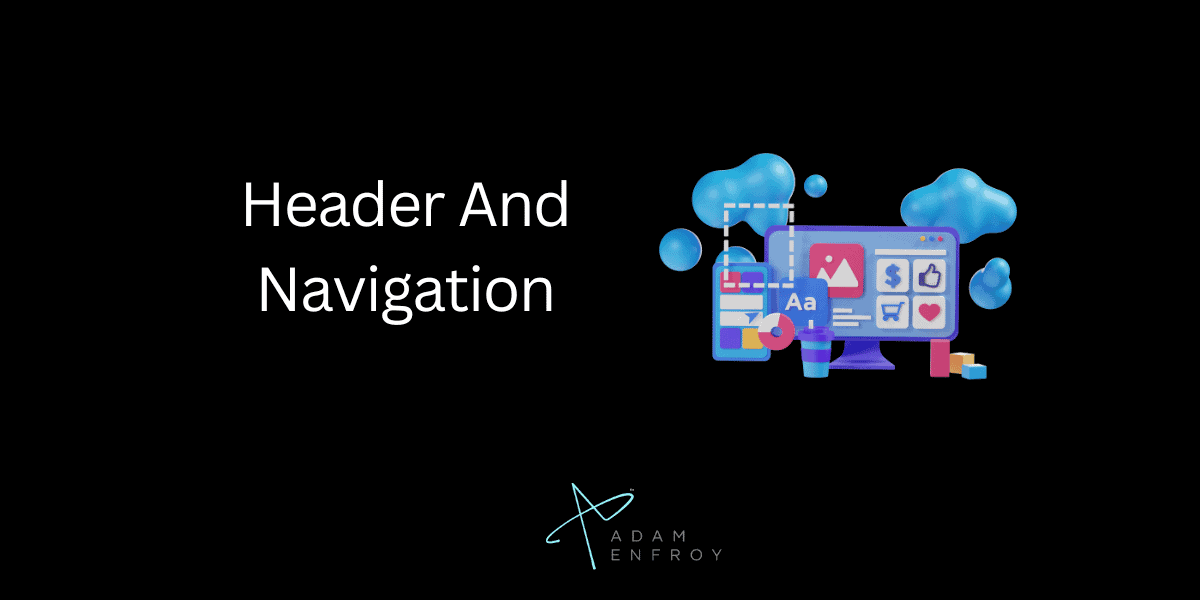
Your header and navigation are the most important elements on your homepage.
They are your users’ first point of contact and should be well-organized with a logo and accessible main post categories.
It is essential to have a clear, concise, and consistent navigation structure.
Users should be able to find the information they seek without confusion or frustration.
Keep It Simple
Simplicity is critical when designing your blog.
Avoid cluttered layouts, too many elements, and unnecessary frills.
It allows your users to navigate easily without any distractions from excess elements.
A simple design approach will also help your blog load faster, improving the user experience.
Color Scheme
The color scheme you select is vital to the overall appeal of your blog.
Choose colors that complement each other and create a cohesive design.
Incorporating high-contrast colors will help highlight important elements on your blog and make your text easier to read.
Also, add a good amount of white space to your design, making your content stand out and enhancing the user experience.
Custom Imagery
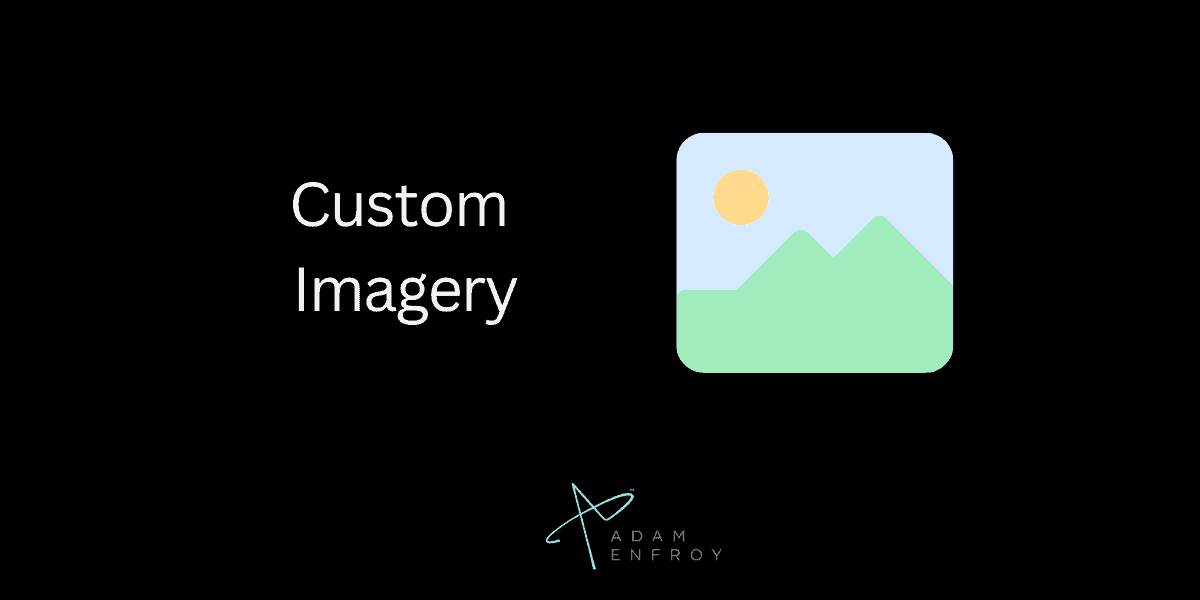
Custom imagery can enhance your blog’s overall appeal.
People are more likely to engage with visual content than with text.
High-quality custom graphics or photos make a great impression on your users and also help to create an emotional connection with your brand.
Adding pinnable images can boost your word-of-mouth marketing efforts, allowing users to share your content on sites like Pinterest.
General Blog Design Considerations
Here are other tips on creating a blog design that stands out and keeps visitors coming back for more.
Choose The Right Platform
Before you start designing your own blog, you must choose the right platform.
Several blogging platforms exist, including WordPress, Wix, Blogger, and Ghost.
Each platform has strengths and weaknesses, so choosing the one that suits your needs is essential.
For example, WordPress is the most popular blogging platform known for its scalability, flexibility, and customization options.
Wix is a drag-and-drop website builder that is easy to use and visually appealing.
Blogger is a straightforward and user-friendly platform, perfect for new bloggers.
Ghost is an excellent blogging platform that focuses on providing a distraction-free writing experience.
Seek Expert Advice

If you’re new to blogging, seeking expert advice can be extremely helpful.
Participate in forums or ask questions on social media to get opinions from experienced bloggers.
You can also contact a web designer or developer if you need help setting up your blog.
They’ll be able to recommend the best platform and provide advice on ensuring your website looks professional and functions appropriately.
Consider Going Custom
If you want an outstanding blog, consider going custom.
A custom blog design offers scalability, uniqueness, and flexibility.
With a custom blog design, you can tailor your blog to your specific needs and ensure it aligns with your brand.
While custom blog design can be more expensive, it’s an investment that can help you achieve your blogging goals in the long run.
Get Inspired By Professional Portfolio Sites
Professional portfolio sites are an excellent resource for inspiration when designing your blog.
Browse through websites like Fiverr or 99Design’s impressive portfolio of stunning blog designs to get ideas for your site.
You can learn much from what’s trending and adjust it to fit your style.
You can create a visually appealing and engaging site by taking inspiration from the experts.
Utilize Educational Resources
Educational resources can be beneficial for new bloggers.
The site offers a variety of articles and tutorials covering website building, design, and more.
Whether you’re looking to learn more about website hosting or how to create an engaging blog post, this is the site for you.
Keep It User-Friendly
No matter your design, it’s important to keep your site user-friendly.
Ensure your site is easy to navigate, loads quickly, and you’ve optimized it for mobile devices.
Remember, users will likely stick around and interact with your site if it’s easy to use and navigate.
Responsive Website Design And Social Sharing
As businesses expand their online presence, providing a seamless user experience that engages and retains visitors becomes increasingly essential.
One factor contributing to user satisfaction is the website’s responsiveness.
It ensures a smooth transition across different devices.
Moreover, integrating related and popular post recommendations captures users’ attention and keeps them browsing.
A responsive website design adapts to different screen sizes, ensuring visitors have a user-friendly experience.
A responsive website design ensures that users can navigate your website smoothly, regardless of the device they use, whether it is a mobile phone, tablet, or laptop.
It promotes user engagement by delivering a smooth and consistent experience, regardless of the device used.
A responsive website design also improves search engine optimization (SEO), making your website more visible to users searching for services or products.
Once users land on your website, you are responsible for keeping them engaged and encouraging them to explore more.
Integrating related and popular post recommendations on your website can increase user engagement by displaying content related to the user’s interests.
Besides, displaying popular and trending posts can encourage users to explore more of your content, leading to increased time spent on your website.
As such, your user engagement will increase, and there’ll be an improvement in your website’s SEO.
Another significant factor is social sharing, which has become a fundamental way for users to interact, connect, and share information with their peers.
Adding simple and visible social sharing buttons to your website can allow visitors to share your content on their preferred social media platform.
Therefore, you’ll expect more traffic on your website and a boost in your online presence and brand awareness.
Additionally, social sharing buttons promote user engagement by allowing them to connect and share information with their peers.
There are various ways of implementing responsive website design, related post recommendations, and social sharing buttons on your website.
You can use website builders like WordPress or Squarespace, which offer pre-designed templates you can customize.
Alternatively, you can hire a web developer or digital marketing agency to create custom designs and ensure optimal implementation.
User engagement is crucial for businesses because it drives website traffic and helps you build a strong online presence.
By providing seamless user experiences and encouraging visitors to explore more, you can increase the likelihood of visitors returning to your website, purchasing your services or products, and referring their friends.
Without user engagement, your website will likely have a high bounce rate, low conversion rates, and diminished brand visibility.
Bring Your Story To Life Through Your “About Me” Page
Every blogger is unique and has their own story to tell.
Whether you’re a fashion blogger or a food blogger, experiences, thoughts, and ideas make you who you are.
Your readers are excited to know more about you beyond your blog, and that’s where your “About Me” page comes in.
Your “About Me” page is the perfect opportunity to tell your story.
Share what inspired you to start your blog and how you started.
When writing blog posts, consider what motivates you to keep going, and explain why your blog is the best resource for readers.
Don’t be shy to give information about your personality, likes, dislikes, and interests.
It gives visitors a glimpse into your world and helps them connect with you.
People are visual and are most likely to connect with your page if it has images that bring your story to life.
Invest in high-quality images representing your brand and add them to your “About Me” page.
You can even add images of yourself, adding a personal touch to your page.
Match them with your blog design to create a cohesive look and feel.
If you have any achievements, share them on your “About Me” page.
It could be an award you’ve won, a publication you’ve been featured in, or even a sponsored partnership.
These achievements give your readers proof that you’re an expert in your field and worthy of their attention.
While your “About Me” page is essential in telling your story, keep it short, concise, and relevant.
In other words, don’t let it become a mini-novel.
After all, visitors are interested in knowing you, but not at the cost of getting lost in a sea of text.
How To Optimize Your Design For Better Readability
White space, sometimes called “negative space,” is the blank area around your content.
Using white space can help readers focus on your content and make your blog feel less cluttered, making readers feel relaxed and more likely to stay longer.
Adding breaks, spacing between paragraphs and images can make your content more visually appealing and easier to read.
Consider using images in your blog, promoting your blog content with cards or thumbnails featuring a featured image, title, date, author, excerpt, category, and “Read More” button.
This technique gives readers an idea of what content they can expect in your blog post.
It also creates visual stimuli that break up the monotony of your content walls.
Make Your Blog Stand Out With Visual Elements
From striking photos to bold typography, there are various ways to add flair and personality to your blog.
As the saying goes, a picture is worth a thousand words, especially in blogging.
A high-quality photo can capture the essence of your post and make it more appealing to your readers.
You don’t need a professional camera to take stunning photos- your smartphone camera can work wonders, too!
Make sure that your photos are relevant to your topic and visually appealing.
You can also add filters or adjust the brightness and contrast to make your photos stand out.
Texture can add depth and dimension to your blog design.
It can be anything- from a simple pattern to a detailed illustration.
You can include texture in your blog’s background, headers, or photos.
Remember that texture should complement your theme and not overpower your content.
You can also play with different textures and see what works best for your blog.
Post headers are essential for your blog’s organization and readability.
But why settle for a plain header when you can make it more interesting?
Illustrated headers can catch readers’ attention and make your blog more dynamic.
You can create illustrations or use stock images that fit your blog’s theme.
Ensure your header is relevant to your post and adds value to your content.
Typography is also important.
This art is all about arranging fonts to make your text readable and appealing.
Typography can convey emotions, set the tone of your post, or highlight important information.
You can choose from various font styles, such as serif, sans-serif, script, or handwritten.
Getting creative with typography can make your blog unique and stand out from the rest.
Remember to keep your fonts readable and consistent throughout your blog.
Enhancing Your Blog With Interactive Features
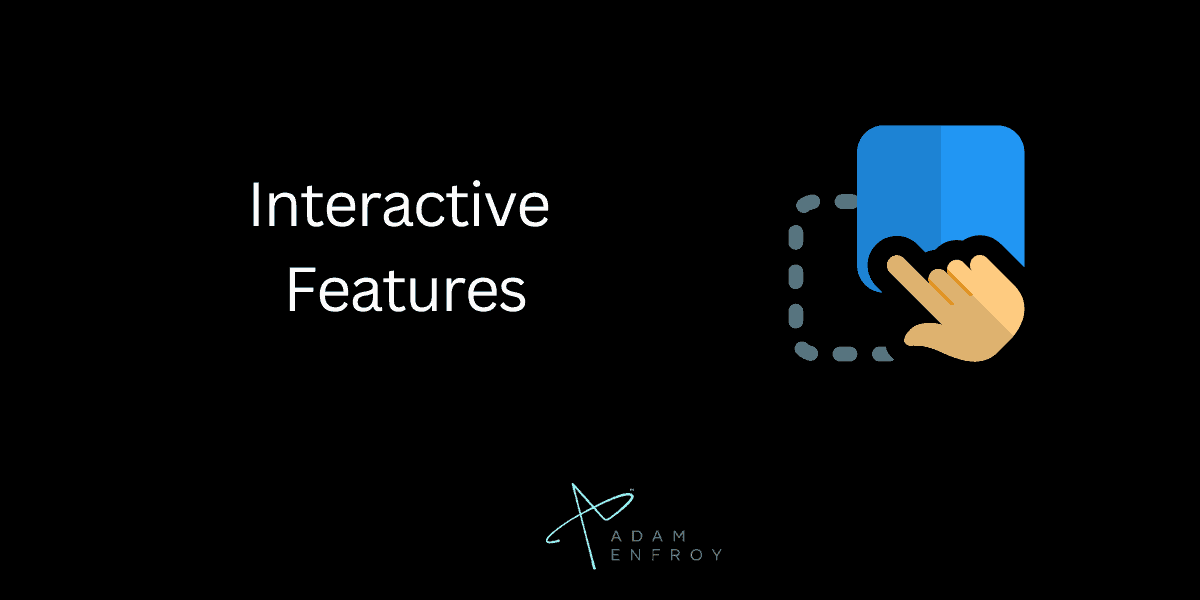
When it comes to enhancing your blog with interactive features, there are various options you can explore.
Starting with the blog’s homepage, ensure you have prominently displayed social sharing links so visitors can easily share your content on their social media channels.
Additionally, consider incorporating a podcast or including recent posts, related posts, and more articles in your sidebar to improve functionality.
Plugins can help to enhance site functionality, and you can also integrate social links within your posts to encourage readers to engage with you on various social media platforms.
If you’re using a WordPress theme, various plugins can help add features like chatbots or live chat options to your site.
Remember that for first-time site visitors, having interactive features can help keep them engaged and encourage them to return.
Strategic Blog Branding Techniques
A great design with compelling graphic elements is crucial if bloggers want to attract readers and stand out.
That’s where strategic blog branding techniques come into play.
You can use blog design ideas, custom images, and featured images to enhance the appeal of the blog categories.
Creating a memorable logo and unique tagline can help establish a strong brand identity that resonates with followers.
But it’s not just the look of the blog that matters.
Optimizing the brand voice throughout the blog’s content is essential to create consistency and foster a sense of familiarity among readers.
By implementing these branding techniques, entrepreneurs can create a visually appealing blog that effectively engages and retains readers in the long run.
Search Engine Optimization (SEO) For Your Blog
Search engine optimization (SEO) is critical to any successful blog.
By optimizing your blog posts and blog page for search engines alike, you can ensure that the widest possible audience sees your content.
Keyword optimization is one of the most crucial elements of SEO, as it helps search engines understand what your blog post is about.
Meta descriptions and alt tags are also essential, providing additional information about your content to search engines and readers.
Site speed and mobile-friendliness are also key factors in SEO, as they can affect how quickly your blog loads and how easy it is for users to navigate on their mobile devices.
Quality backlinks are critical for boosting your blog’s search engine rankings, as they demonstrate that other authoritative sites find your content valuable.
By incorporating these SEO tactics into your blog design, you can ensure that your blog stands out from the competition and attracts more readers to your latest blog post, featured article, or popular blog posts.
When redesigning your blog, look at blog design examples to get ideas for optimizing your blog layout and cover and improving your overall web design.
Effectively Monetizing Your Blog
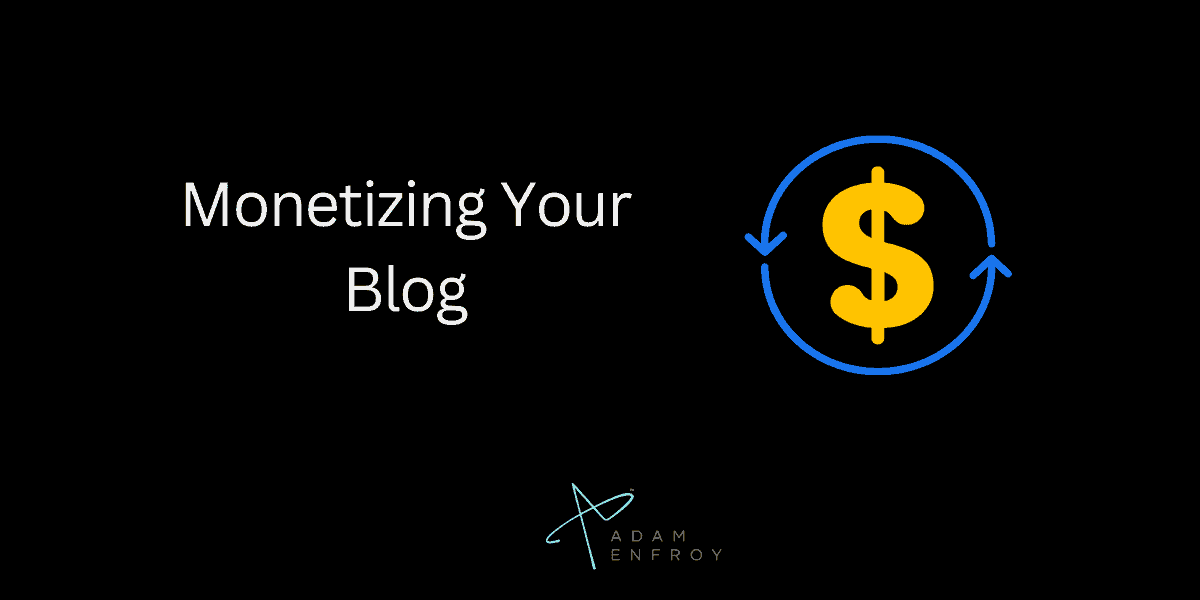
Effectively monetizing your blog, whether a travel blog or a lifestyle blog focusing on the latest tech news, requires a solid call to action and carefully curated design tips.
A great blog should feature a minimalist and beautiful blog page design that guides your readers toward your ecommerce landing page.
The landing page should be at the top and prominently feature options.
Whether you make money through affiliate marketing, offering subscription services or memberships, creating and selling your products/services, and promoting sponsored posts and partnerships, each option should be easily accessible.
Using landing page builders with drag-and-drop design makes designing a professional landing page easier.
You can customize the look and feel to fit your brand without any coding experience.
Wrap Up.
Blogging is a great way to share your thoughts and ideas.
You can make your blog look professional and appealing with some design know-how.
Remember to keep your content relevant, use interesting visuals, experiment with textures, create eye-catching headers, and get creative with typography.
With these tips, you can make your blog stand out from the rest.
Further reading on AdamEnfroy.com: Did you know you could start a blog anonymously?
For those that want to keep their identity safe online, anonymous blogging is the way to go.


